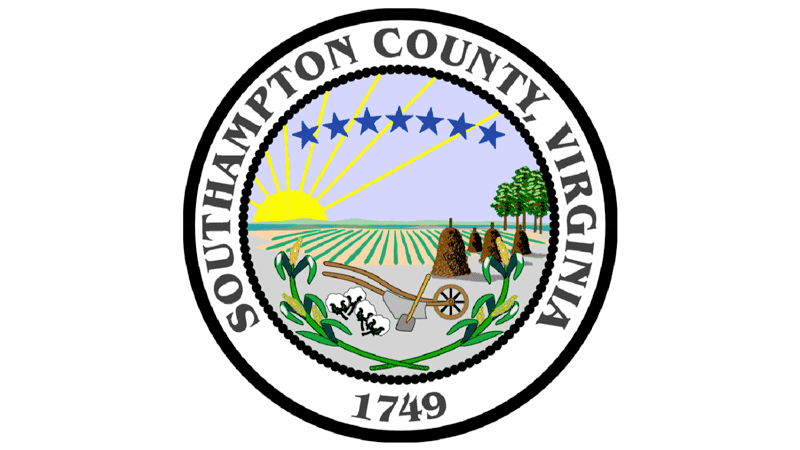What’s next for courthouse
Published 2:09 pm Saturday, November 11, 2017
COURTLAND
Now that the majority of voters in Southampton County and Franklin have said no to a new courthouse, the next question is what happens next.
Michael Johnson, county administrator, was recently asked that very question by Joe Vick, one of the vocal opponents of the proposal to build a new courthouse on Camp Parkway. He explained via email what’s ahead.
First, though, Johnson said, there’s no real need for any more committee meetings since the group has done its job. But some of the individual members might work with the architects where the designs of the site improvements are concerned.
“Procedurally, there will be a series of public discussions and, presumably, votes over the next several months. This is how I see this moving forward:
“First, our procurement solicitation for architectural services included “pre-referendum” and “post-referendum” services. The signed contract with Moseley (approved September 2016) was only for pre-referendum services; we deferred negotiation of the “post-referendum” services until the outcome of the referendum was known. Once we’ve developed the proposed terms (and cost) for post-referendum services with Moseley, that contract will be presented to the BOS in open session for action [VOTE 1 – Contract for Design Services].
“One of the first things the Design Team will seek from the BOS is approval of a Program Design and Concept Plan, which defines the current and long-term space needs for the facility, and illustrates how those needs will be met on the site. The Board must formally adopt the Program Design/Concept Plan developed by the Courthouse Planning Committee over the past 12 months (the $26.227 million option), or direct the Design Team to develop other alternatives, but recognizing that we’ve had no indication from the Court that they’re willing to accept anything less. If the Board rejects the $26.227 million concept, and differences between the BOS and Court are irreconcilable, or the Court determines that the BOS is exhibiting bad faith, or the BOS simply elects to “do nothing,” I would expect the Court to follow the process prescribed in Section 15.2-1643 of the Code of Virginia.”
Johnson said these are the basic steps in that event.
a) Local Circuit Court issues a Show Cause Order against the BOS;
b) Chief Justice of State Supreme Court assigns a judge from another circuit in the Commonwealth to hear and determine whether the court facilities are in fact insecure or out of repair or otherwise pose a danger to the health, welfare and safety of court employees or the public and the extent to which repairs, if any, are necessary;
c) The BOS has an option to appoint a five-member panel, three of whom must either be architects or professional engineers (and representing three different firms). The panel then evaluates the facility, compares its condition to recognized standards (i.e., the Supreme Court Guidelines), and makes its report and recommendations to the Circuit Court Judge appointed to hear the case. All costs of the panel must be borne by the City and County;
d) Upon receipt of the report and recommendations from the panel (if utilized), the Court will consider the evidence, and if it finds that the facility is, in fact, safe, secure and in good repair, will vacate the Show Cause Order. Otherwise, the Court will issue a Writ of Mandamus commanding the BOS to meet its statutory obligations in causing the Courthouse to be made secure, or put in good repair, or rendered otherwise safe;
e) The Court then appoints its own legal and design professionals to oversee the County’s design and construction process ensuring that the terms of its Writ of Mandamus are followed.
The administrator added, “Once a Program Design and Concept Plan is approved by the BOS (or alternately, after a Writ of Mandamus is entered), the Design Team will engage with stakeholders (BOS, City Council, judges, constitutional officers, staff, public, etc.) during the design phase, which is expected to take 10-12 months. I would anticipate three public presentations to the BOS during the Design Phase, one initially to seek approval of the Program Design & Concept Plan and gather preliminary input/feedback, another somewhere around the 50 percent design stage to make sure all the stakeholders are still onboard as the project begins to take shape, and one at the end for final plan approval before advertising for bids [VOTE 3 – Approve the Construction Plans and Authorize Solicitation of Bids].”
He continued, “At about the 90 percent design phase, we’ll ask Davenport & Co. (our financial advisors) to reach out to the credit market on our behalf for project financing.
The size of the project financing will be based on the architect’s estimates up to that point along with a reasonable contingency. We also intend to roll the financing for several school roof replacements in this same bond issue, if we haven’t already addressed them separately beforehand. The BOS will then have to approve the terms of the financing and authorize the issuance of the bonds in open session [VOTE 4 – Approve the Project Financing].
“Finally, once construction bids are received, and financing is secured, the Board will vote in open session to accept the lowest responsive and responsible bid and award the contract [VOTE 5 – Award the Construction Contract].”





